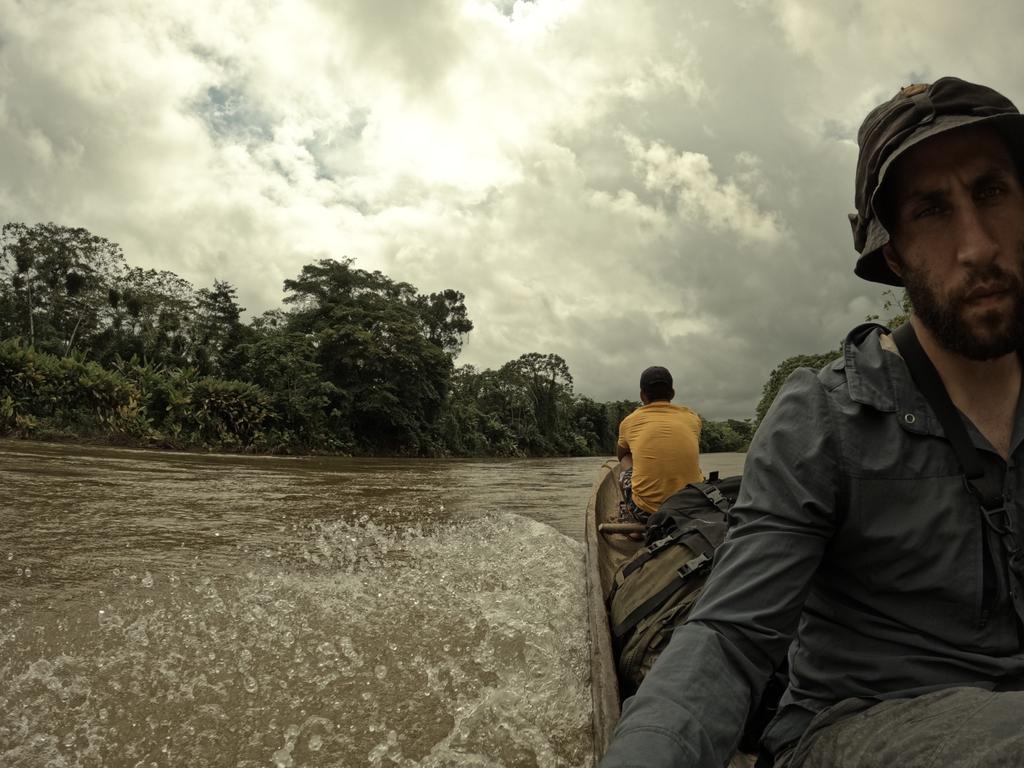Crossing The Dangerous ‘Darién Gap’
A dangerous expedition will usually have one key selling point for a daring explorer, whether it’s the natural landscape that provides the challenge, perhaps political turmoil in the area, or deadly wildlife. Few will have every risky attraction tied to their names, yet The Darién Gap has them all—with a laundry list of challenges you must face passing through this wild, remote region between North and South America Drawn to this hostile region was UK explorer Daniel Eggington, who had spent 5-years working towards going on this incredible expedition to cross the Darién Gap by foot. Many would deter Eggington from embarking on this mission, including legendary survivalist Bear Grylls. Still, Eggington was adamant about completing this challenge. He was further driven by the idea of educating people on the infamous region through his first-hand experience. Still, the question lingers, what makes The Darién Gap so infamously dangerous yet spectacular?
A dangerous expedition will usually have one key selling point for a daring explorer, whether it’s the natural landscape that provides the challenge, perhaps political turmoil in the area, or deadly wildlife. Few will have every risky attraction tied to their names, yet The Darién Gap has them all—with a laundry list of challenges you must face passing through this wild, remote region between North and South America Drawn to this hostile region was UK explorer Daniel Eggington, who had spent 5-years working towards going on this incredible expedition to cross the Darién Gap by foot. Many would deter Eggington from embarking on this mission, including legendary survivalist Bear Grylls. Still, Eggington was adamant about completing this challenge. He was further driven by the idea of educating people on the infamous region through his first-hand experience. Still, the question lingers, what makes The Darién Gap so infamously dangerous yet spectacular?
A Brief Background on The Darién Gap
While The Darién Gap sits between two continents and connects them by land, it also separates the continents with no road constructed to travel between them. Throughout history, attempts have been made to establish a Trans-American highway but fell short after numerous setbacks and disasters in The Darién Gap. Therefore, it’s one of the final frontiers of inaccessible land for urban infrastructure.
What makes the Darién Gap so difficult to cross through starts with its untamed geography. It is comprised of dense rainforest, mountains and an all-encompassing watershed that tears through the entire region with rapid rivers, streams and creeks
posing threats of flash floods and producing marshy landscapes difficult to traverse through.
posing threats of flash floods and producing marshy landscapes difficult to traverse through.
It’s one of the rainiest places in the world. If a flash flood doesn’t sweep you away in your tent while sleeping, or you’re lucky enough to pass the many dangerous river crossings successfully—then it’s the many insects, snakes and carnivorous mammals that will get you—or at the very least—harm you. It’s close to impossible to come out unscathed. Making matters worse, the region is completely lawless and unpoliced. Criminal gangs and terrorist groups set up shop around the area and are heavily involved in human/drug/arms trafficking. The Darién Gap has earned itself the reputation of being the graveyard for migrants, who seek to make their way up to America but fall to their demise when locked in the clenches of The Darién Gap. Daniel Eggington’s plan had a high probability of death where he would travel on foot instead of using specialised 4x4 vehicles and riding in a squad.
Eggington’s experience would closely simulate the struggles that migrants and local indigenous people have faced when traversing through The Darién Gap. This allowed Eggington to better understand their struggles and experiment with solutions that teach people how to cross The Darién Gap by foot in the future.
The Start of The Journey
Daniel Eggington’s journey began in Juradó, the most north-western town in Columbia that had to be reached by boat. From there, Eggington would start planning the crossing with his connections. One of which was a friend he met last year, with family on the other side of The Darién Gap, in the closest town in Panama called Cocalita—the place Eggington plans to reach at the end of his journey that was 60 miles away.
But first, Eggington needed permission from a local clan that controlled the area—paying them a total of around £140 to be granted his request. Concern began to settle in Eggington’s mind about whether the clan would break the deal. Worst yet,
there were four days of uncertainty where Eggington remained in the village, paying £12 per night at an unglamorous hotel with power cuts occurring twice a day.
there were four days of uncertainty where Eggington remained in the village, paying £12 per night at an unglamorous hotel with power cuts occurring twice a day.
Finally, he was given the go-ahead. Eggington would be transported on a boat to an indigenous village. Upon arrival, after being thrashed by water on the narrow motorboat, he was greeted by children from the remote community. He then entered their village that was made up of shacks and huts.
Eggington spent a couple of days with the community, visiting their homes, getting to know them and joining in on games of football—connecting with people who are so disconnected from urban life yet still have so much in common with us at the same time. It would rain continuously at the village, but when the rain stopped, he was back on the journey, this time by foot with a trusted guide to officially begin trekking through The Darién Gap.

